It’s not everyday I get to use the words “quick” and “eternal” in the same phrase.
Earlier this month I flew part-way around the world from San Francisco to Rome to give a keynote address at the second-ever National Geographic Science Festival (or rather Festival Scienze). My talk, titled “Unseen Oceans,” focused on some of the underwater imaging systems I’ve developed that help us see the ocean in ways we haven’t before: e.g., the ultra-high speed camera we used on Mission 31 and the fish-tracking camera system I helped develop for NOAA. I also talked about how my ballet training and appreciation of the arts give me a unique perspective on science and engineering. My goal when speaking to the student audience was to show how all sorts of people can get into this career (ballerinas! midwesterners!) and help solve problems facing our ocean and planet.
Earlier this month I flew part-way around the world from San Francisco to Rome to give a keynote address at the second-ever National Geographic Science Festival (or rather Festival Scienze). My talk, titled “Unseen Oceans,” focused on some of the underwater imaging systems I’ve developed that help us see the ocean in ways we haven’t before: e.g., the ultra-high speed camera we used on Mission 31 and the fish-tracking camera system I helped develop for NOAA. I also talked about how my ballet training and appreciation of the arts give me a unique perspective on science and engineering. My goal when speaking to the student audience was to show how all sorts of people can get into this career (ballerinas! midwesterners!) and help solve problems facing our ocean and planet.
The week prior I gave a similar talk at National Geographic Headquarters in Washington, DC, though it wasn't the same. My instinct is to mix it up every time because I learn more that way, plus it’s more fun to tell new stories. I hadn’t quite expected how different it would feel giving the talk to an Italian audience. For one, when I test drove the talk with two Italians (thanks fellow explorers Federico Fanti and Marcello Calisti), we realized that I should modify a few cultural references unlikely translate. To name a few: “RVs” are not a thing in Italy. “Camper van,” okay. I describe Aquarius, the undersea science habitat, as "a mix between an RV and a space station." In addition, many Italians aren't likely to instantly know Ohio/Michigan aren't near the ocean. For the student talk, the meaning of "snow day" doesn't translate well, but "school canceled because of weather" makes sense. Movie star Adrian Grenier, in one of my stories, translates. Doc Edgerton's iconic milk drop photo, which I use to describe high speed photography, is also not so recognizable to a young audience.
With those modified, I thought it’d be fairly smooth sailing. But then there was an aspect with consequences I didn’t anticipate. It was my first time giving a talk where the majority of the audience was listening via live translation in headphones. I’ve been fortunate to listen to talks presented like like this at CERN, the United Nations, and the International Maritime Organization, and I always think it’s cool. As a speaker though, I like to feed off the audience’s energy (yeah like a vampire), and ideally look at faces so I can adapt to confusion, boredom, or whatnot. I enjoy it when the talk feels like a dialogue with the audience. With a mostly foreign audience listening via translation, this aspect was very different. A NatGeo freelancer reminded me that jokes and many phrases simply don’t translate. At every pause I heard loudly the audio translations. For the last 2/3 of the talk I spoke at the same pace but with more dedicated pause between sentences so translation could match. My friend Katya, who has translated between Russian and English, is familiar with this and wisely recommended meeting with the translators beforehand, so we could run through the talk and they’d know what words might be awkward. Pro tip! Now I know!
With those modified, I thought it’d be fairly smooth sailing. But then there was an aspect with consequences I didn’t anticipate. It was my first time giving a talk where the majority of the audience was listening via live translation in headphones. I’ve been fortunate to listen to talks presented like like this at CERN, the United Nations, and the International Maritime Organization, and I always think it’s cool. As a speaker though, I like to feed off the audience’s energy (yeah like a vampire), and ideally look at faces so I can adapt to confusion, boredom, or whatnot. I enjoy it when the talk feels like a dialogue with the audience. With a mostly foreign audience listening via translation, this aspect was very different. A NatGeo freelancer reminded me that jokes and many phrases simply don’t translate. At every pause I heard loudly the audio translations. For the last 2/3 of the talk I spoke at the same pace but with more dedicated pause between sentences so translation could match. My friend Katya, who has translated between Russian and English, is familiar with this and wisely recommended meeting with the translators beforehand, so we could run through the talk and they’d know what words might be awkward. Pro tip! Now I know!
These elements made the talk somewhat of a challenge as my first experience being translated real-time, but I learned so much. Students had excellent follow-up questions, both afterwards and then through the contact page on my blog.
| Chatting with students. Students at left already got their school to stop using single-use plastics in the cafeteria! |
My favorite time was chatting with students afterwards. Three 4th grade students told me about their ocean plastic project. The one boy introduced themselves confidently “We are explorers, and we are doing this project on plastic pollution.” They had already successfully campaigned for their school to replace one-use plastics in the cafeteria with reusable material, and the school made the change! I was impressed and inspired!
The CEO of Sky, Jeremy Darroch, said “One question I’m sure every business is asking with now is: How do I stay relevant to young people?” Sky is sponsoring Ocean Rescue, a multifaceted initiative that includes a marketing campaign geared towards reducing single use plastics. As a company, it has pledged to eliminate single-use plastics from their business and supply chain by 2020. You can follow along with their pledge using #PassOnPlastic.
| Standing on carpet made from recycled fishing nets with friend Katya. The whale sculpture is beautiful, but sad -- made from plastic bottles found on beaches. |
| | We had a great evening with Joel Sartore’s work, especially interacting with artificial reality animals in the exhibit. Video at left shows us playing with virtual reality seal in the Photo Ark exhibit. That's Sylvia Earle to my left! It was so fun! As a plus, it aligned with the the vision that my team and I presented two years ago for Future of SeaWorld at the International Business Ethics Competition (blog post here). |
Tour of Aquarius now with Italian subtitles!
*Courtesy of Dr. Federico Fanti in the wee hours of the morning before my talk.
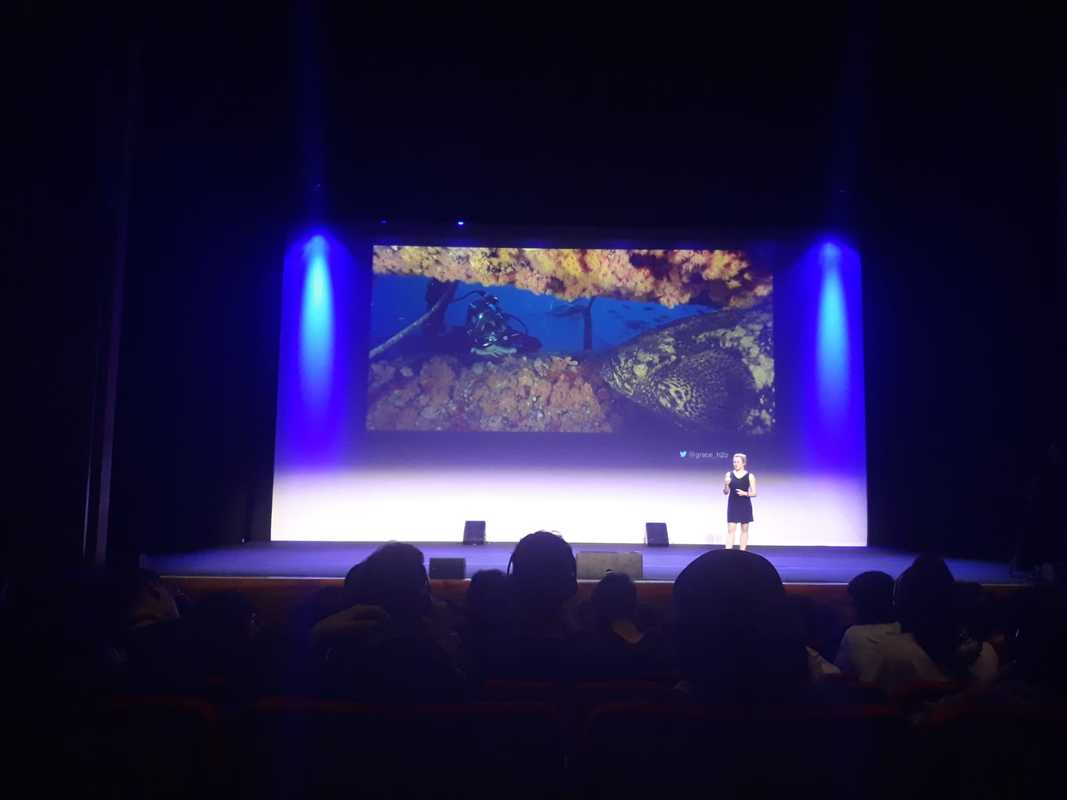
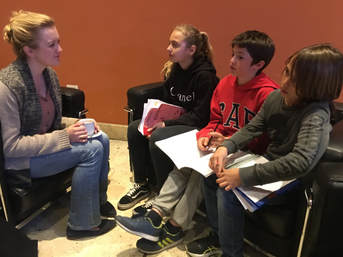

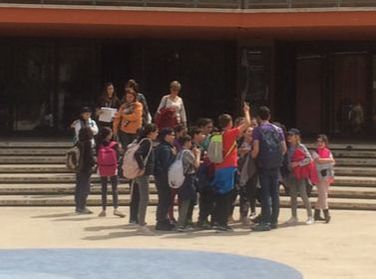
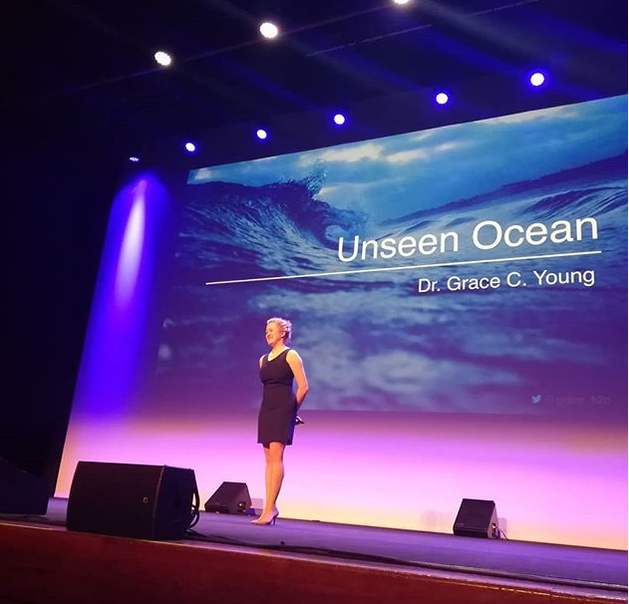
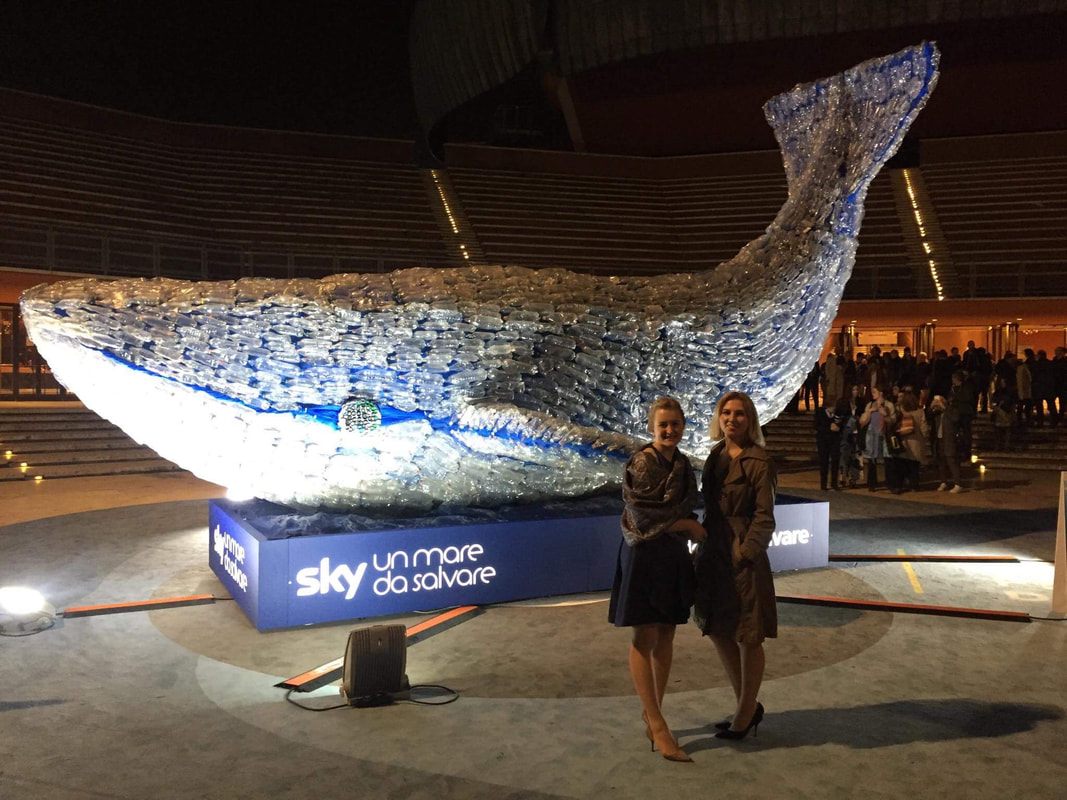
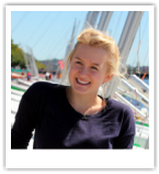
 RSS Feed
RSS Feed
